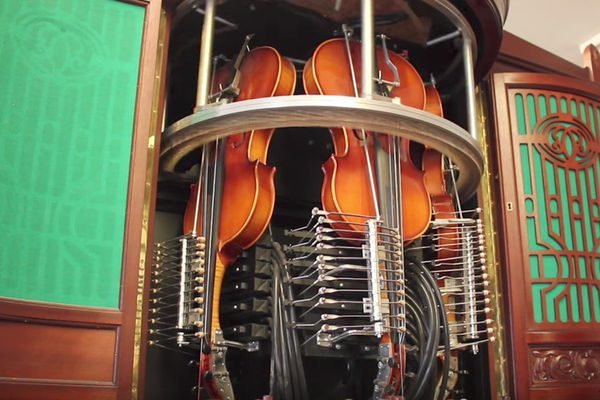Watch a Player Piano Rock Out
This piano tickles its own ivories.
Player pianos lend a whole new meaning to the phrase “ghost in the machine.”
Automated instruments date back to the early 18th century, but we generally associate player pianos with Old West saloons. Even without a decent piano player in town, bar patrons could be serenaded by a piano that played all on its own. It worked in a sort of analog mechanical way: the piano would “read” a tin spool or a perforated paper sheet, which it translated onto the traditional hammers and keys, that lowered with each note.
The eerie instrument was sort of an early precursor to the jukebox. The player piano came with several rolls, each of which would play a popular tune of the day. Establishments could purchase more for the piano to play, but maintaining the delicate machinery of the pianos was expensive.
After the Wall Street Crash of 1929, player pianos waned in popularity. By the time the market recovered, the instruments had been dethroned by radios as the de facto form of at-home musical entertainment.

A player piano. (Photo: Daderot/Public Domain)
As with any arcane machinery, today there are professionals who restore player pianos to working order. Such is the case with this one, a “nickelodeon” fixed up by Roberts Restorations. In this video, the piano plays “Circus Galop”, a jaunty modern song composed in the style of 1900s popular music.
It’s a sort of stress test for the piano, to see if it can keep up with the speed of the song. The tune also showcases the automaton’s inhuman abilities. Watching the keys, one can see that the piano is doing things no human ever could, striking up to 12 keys at a time at a rate that would snap the fingers of even the most accomplished pianist.
If it had a face, this piano would be smirking.






























Follow us on Twitter to get the latest on the world's hidden wonders.
Like us on Facebook to get the latest on the world's hidden wonders.
Follow us on Twitter Like us on Facebook